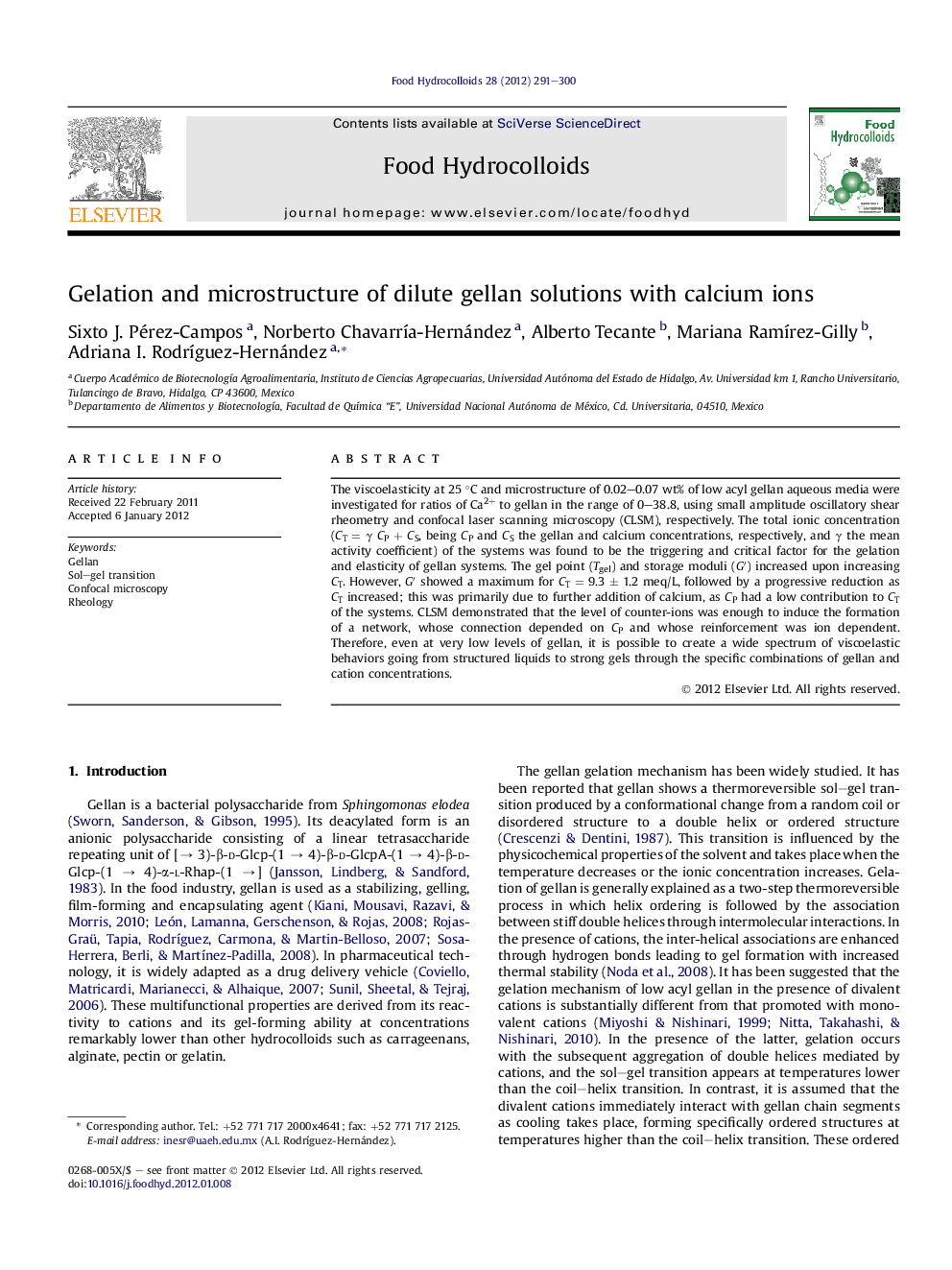| Article ID | Journal | Published Year | Pages | File Type |
|---|---|---|---|---|
| 604248 | Food Hydrocolloids | 2012 | 10 Pages |
The viscoelasticity at 25 °C and microstructure of 0.02–0.07 wt% of low acyl gellan aqueous media were investigated for ratios of Ca2+ to gellan in the range of 0–38.8, using small amplitude oscillatory shear rheometry and confocal laser scanning microscopy (CLSM), respectively. The total ionic concentration (CT = γ CP + CS, being CP and CS the gellan and calcium concentrations, respectively, and γ the mean activity coefficient) of the systems was found to be the triggering and critical factor for the gelation and elasticity of gellan systems. The gel point (Tgel) and storage moduli (G′) increased upon increasing CT. However, G′ showed a maximum for CT = 9.3 ± 1.2 meq/L, followed by a progressive reduction as CT increased; this was primarily due to further addition of calcium, as CP had a low contribution to CT of the systems. CLSM demonstrated that the level of counter-ions was enough to induce the formation of a network, whose connection depended on CP and whose reinforcement was ion dependent. Therefore, even at very low levels of gellan, it is possible to create a wide spectrum of viscoelastic behaviors going from structured liquids to strong gels through the specific combinations of gellan and cation concentrations.
Graphical abstractFigure optionsDownload full-size imageDownload as PowerPoint slide
